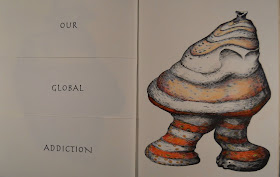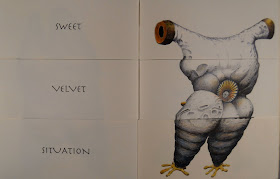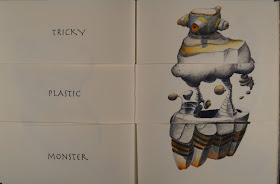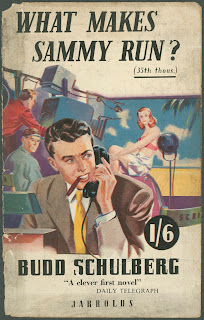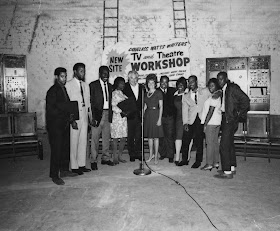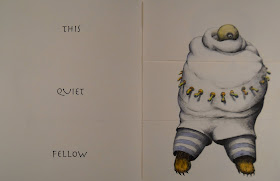 What started as a Surrealist parlor game, the exquisite corpse has become a favored medium for book artists. Originally the concept was a word game: lists of words sorted into their parts of speech could be assembled and reassembled to create surprising new meanings, confusion, and profundity. With the Surrealists, the idea became visual and the codex was the ideal format to build bodies and shapes.
What started as a Surrealist parlor game, the exquisite corpse has become a favored medium for book artists. Originally the concept was a word game: lists of words sorted into their parts of speech could be assembled and reassembled to create surprising new meanings, confusion, and profundity. With the Surrealists, the idea became visual and the codex was the ideal format to build bodies and shapes.U.B.3 (Ultra Bio 3) is an exquisite corpse that features eight interchangeable lithographic images by David Lantow. While the corpse has a head, body and feet, it looks a little like a germ, a fungus, or even an alien. But in the wake of Deepwater Horizon, it evokes memories of tar balls washing ashore in the Gulf of Mexico and crude oil clinging to dying wildlife. The text morphs from "This Quiet Fellow" to finally rest at "Our Global Addiction." Along the way there are an additional 510 possible combinations, some serene like "Sweet Velvet Situation," some more sinister like "Tricky Plastic Monster." Of course, if you want, you can have a "Sweet Plastic Addiction" or a "Tricky Velvet Fellow."
Come enjoy the game by asking for David Lantrow's U.B.3.
